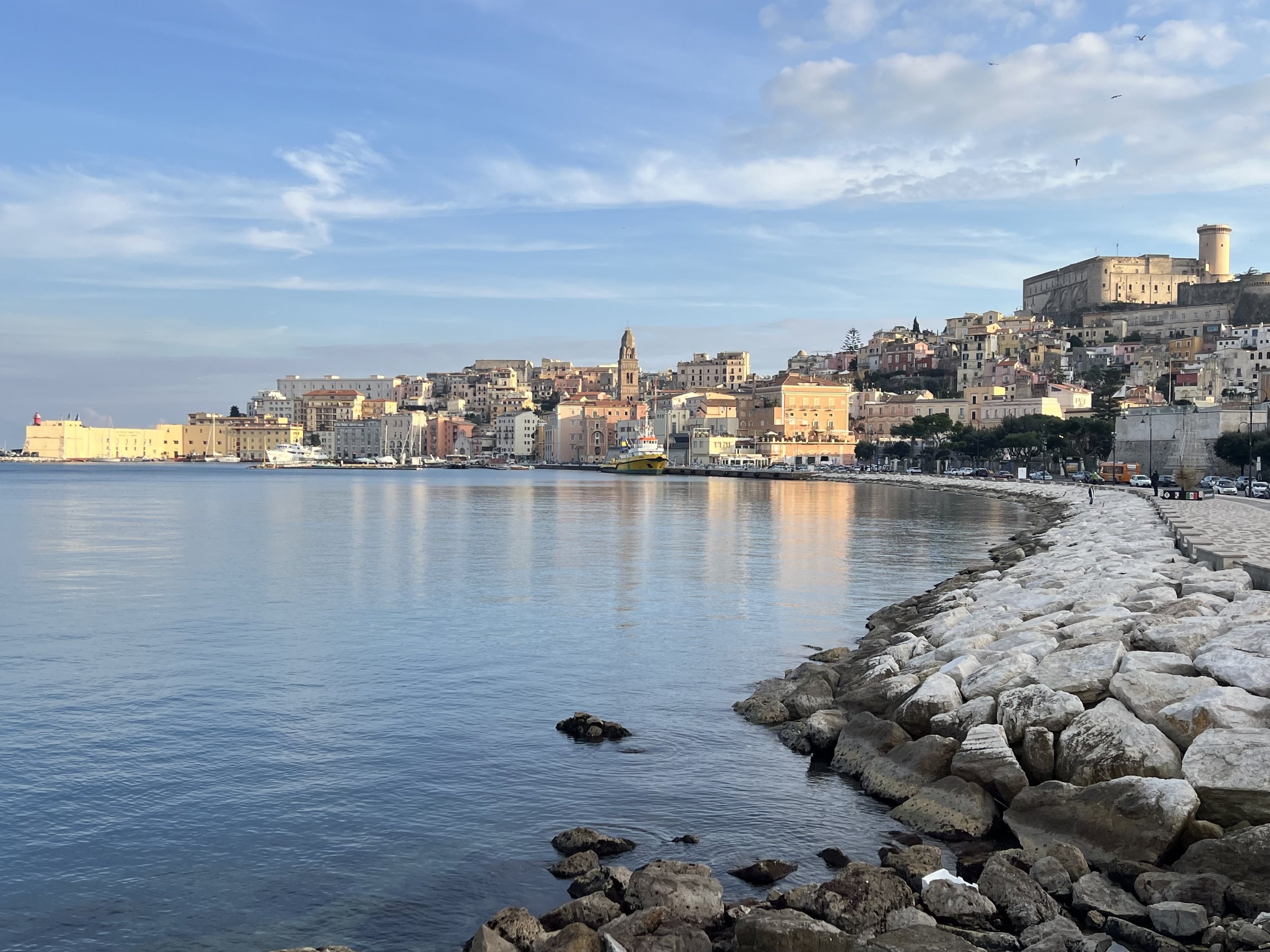86km Gaeta to Cassino
Gaeta
Ride overview
This is a ride along a war-front which was bitterly contested over nine months including over the most severe Italian winter on record. However, other than the cemeteries at either end of the day, there is no war, nor any reminders of the bitter fighting to distract you from the very real pleasures of the day; a glistening Tyrrhenian Sea, fields of flowers, groves of olives, hot springs, a jade river and Monte Cassio itself, the heart and soul of Benedictine Monastiscism. The surfaces are mainly small country lanes in various states of repair with names such as ‘The body of Christ’, or ‘The lesser Christmas’. The air is sweet and sometimes sulphurous, the sky nearly always blue, the mountains impassive and monumental. The ride up to the monastery atop Monte Cassino is a bit of a test at the end of day one, but as one of the highlights of the ride - literally - it is worth every pedal stroke.
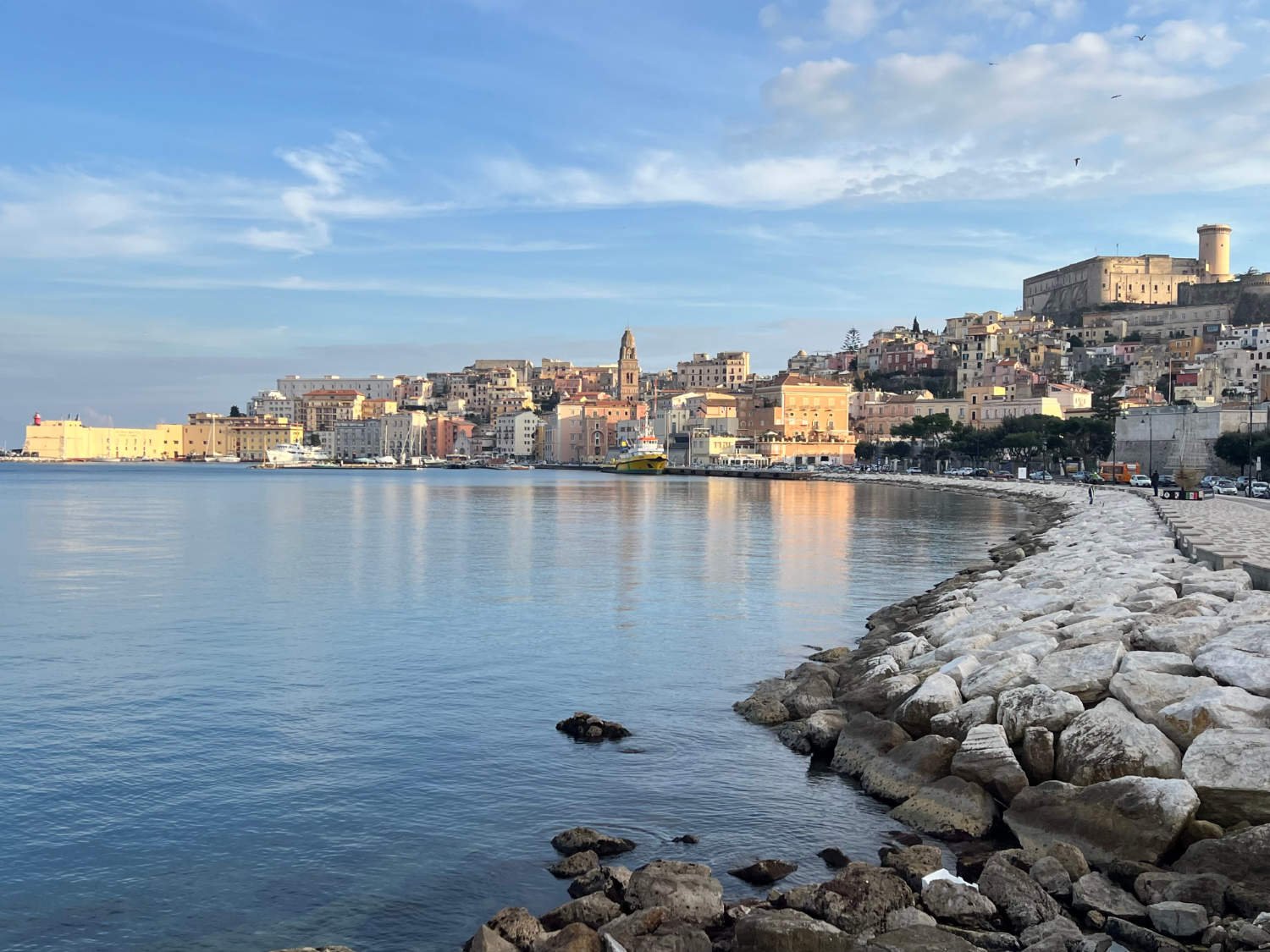



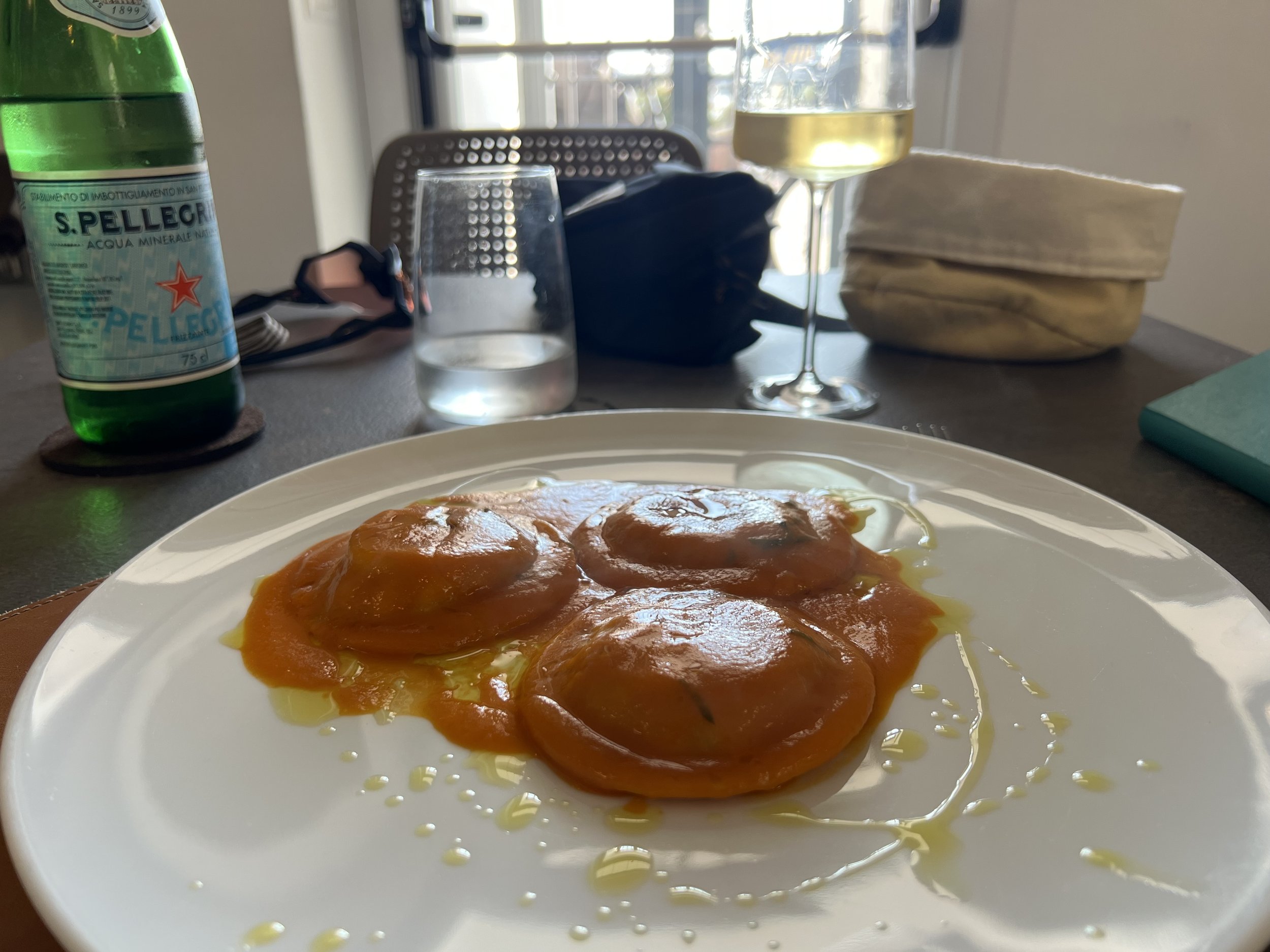
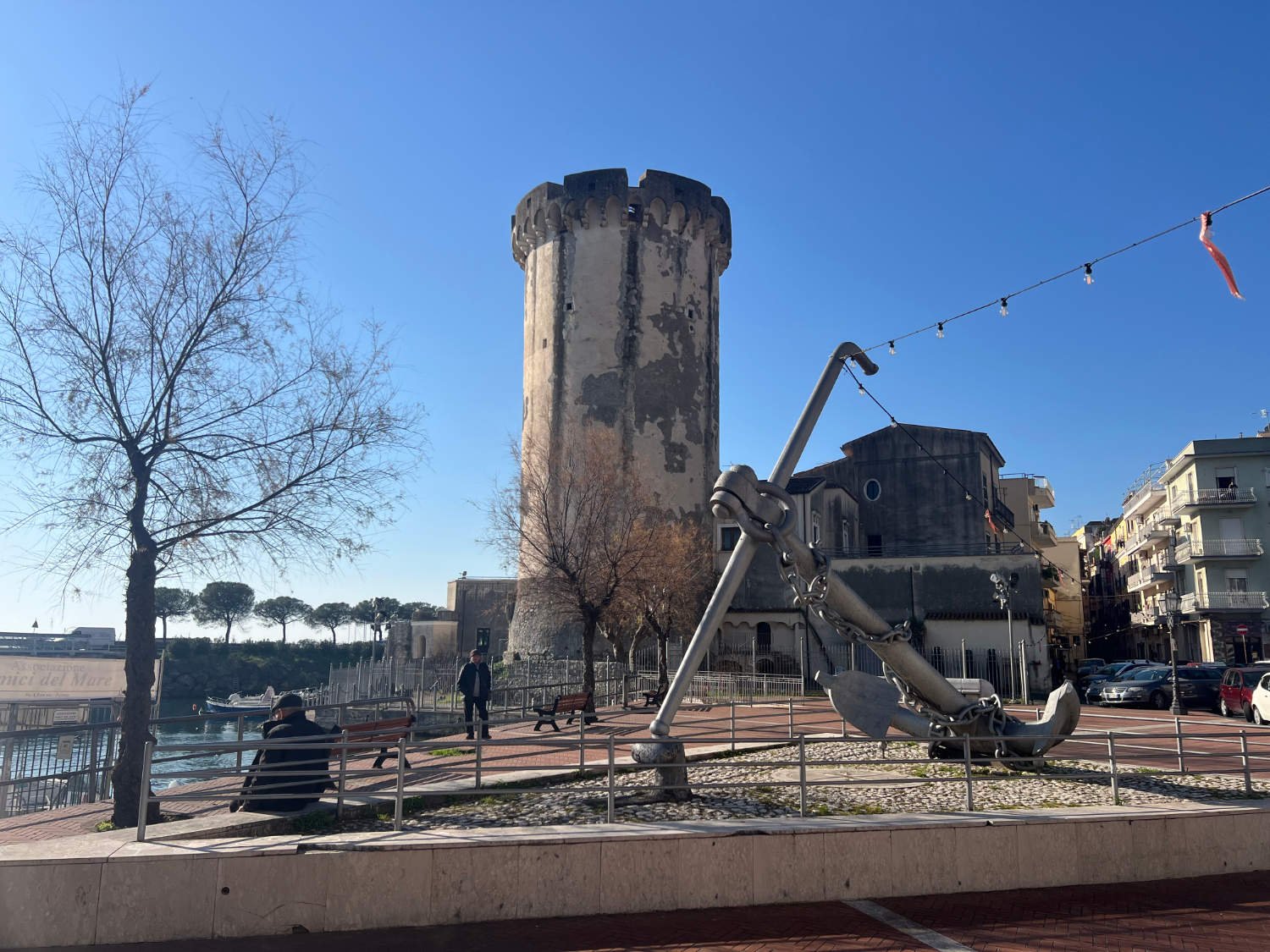
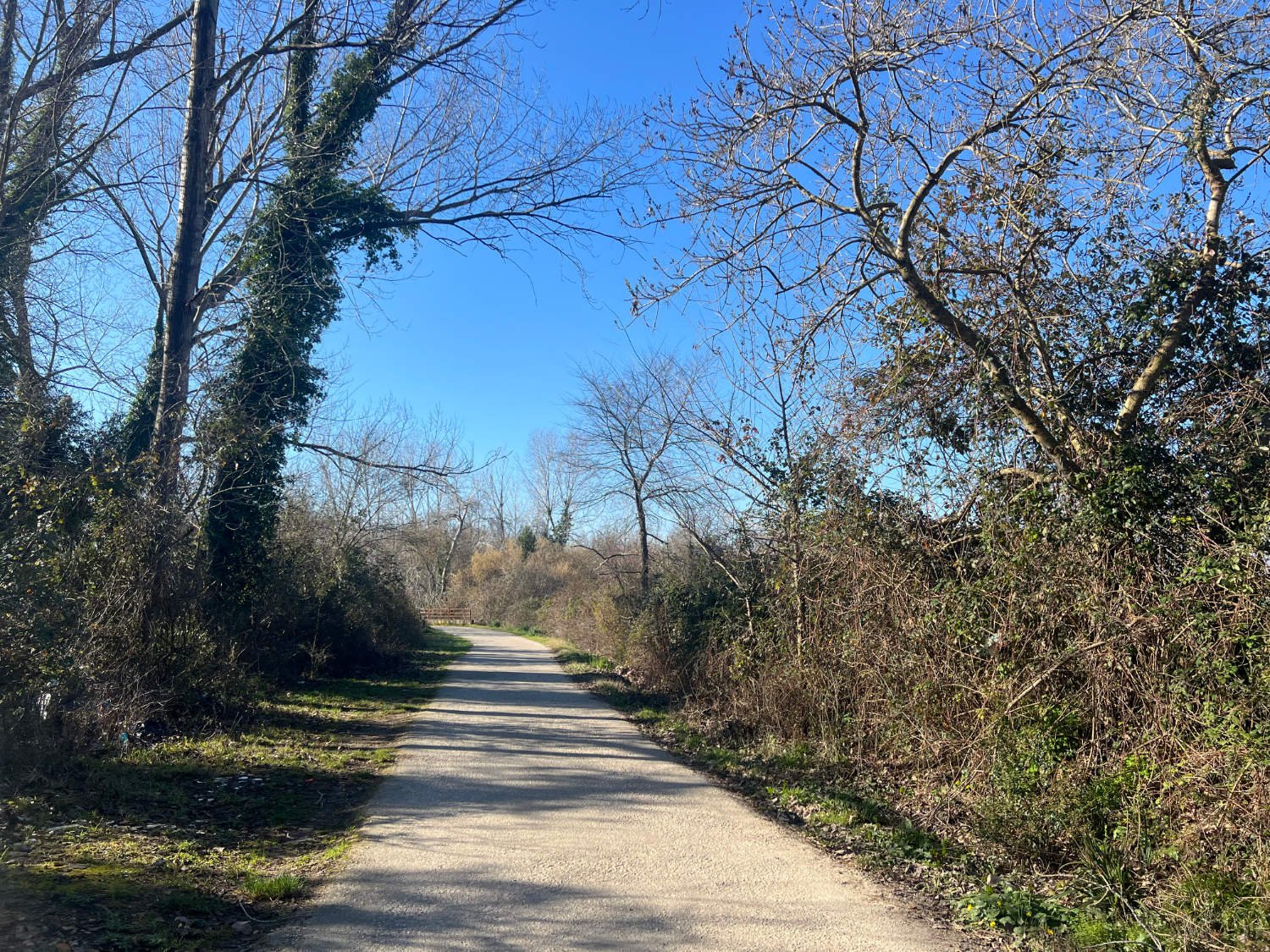


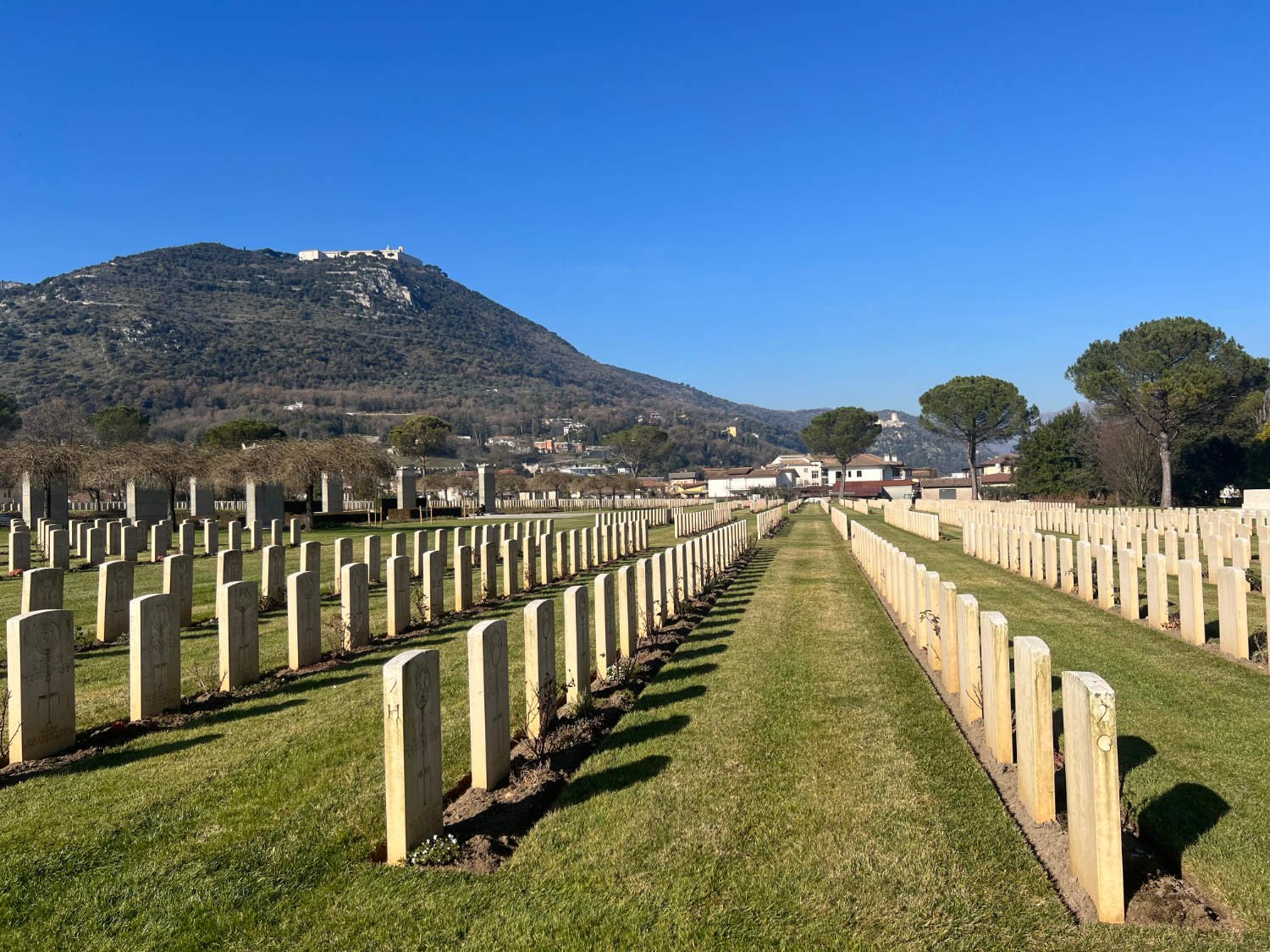
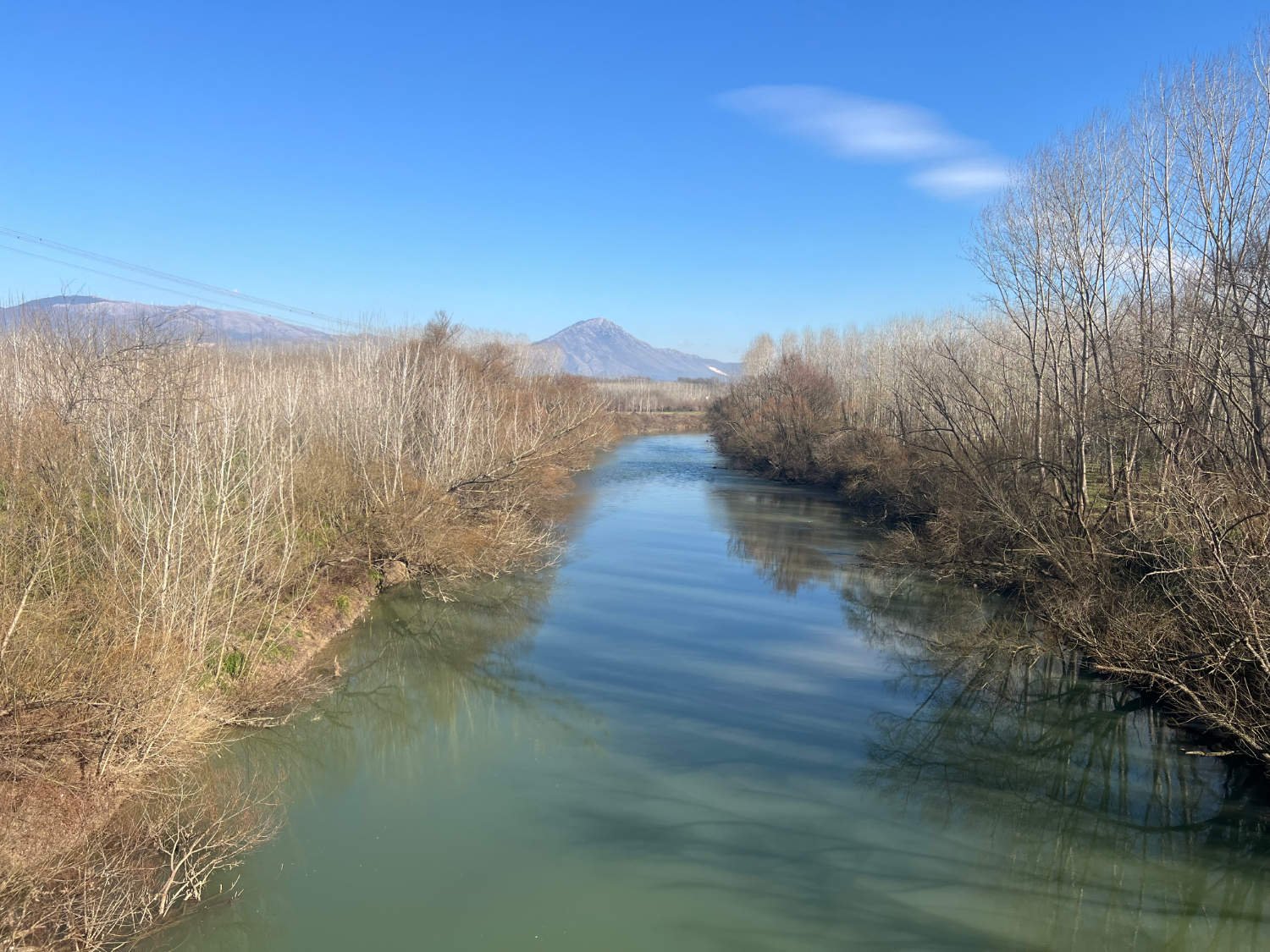
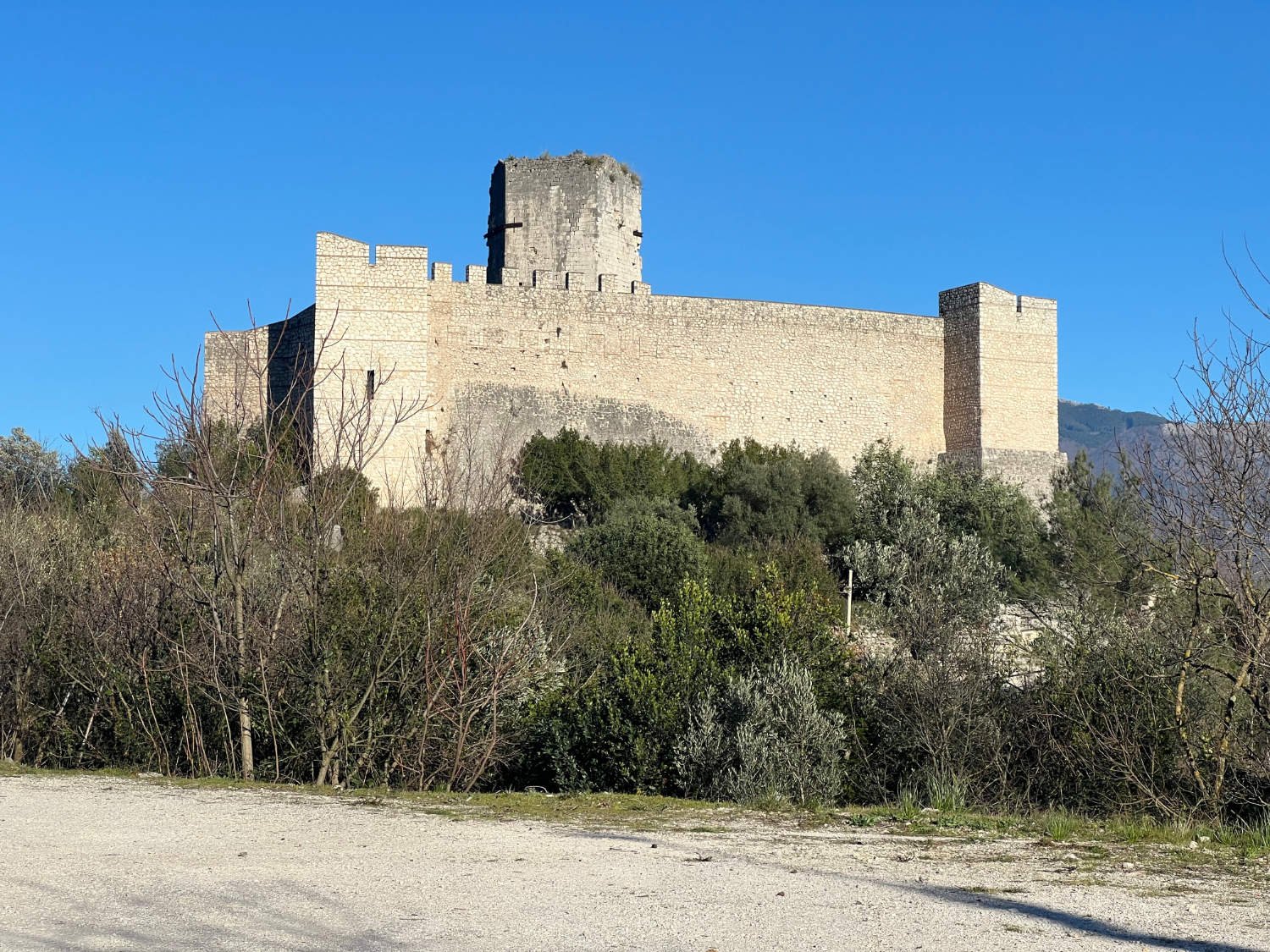
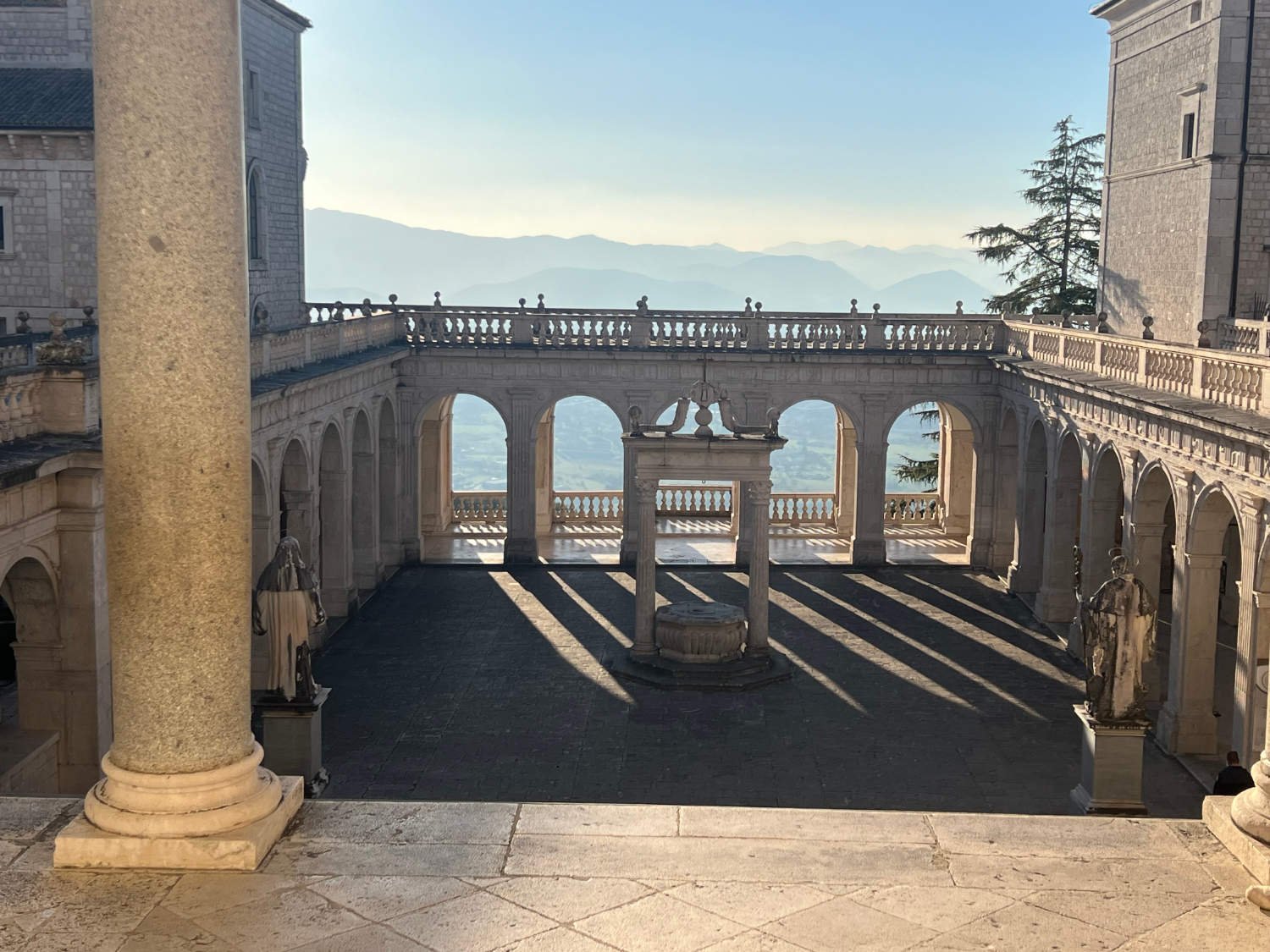
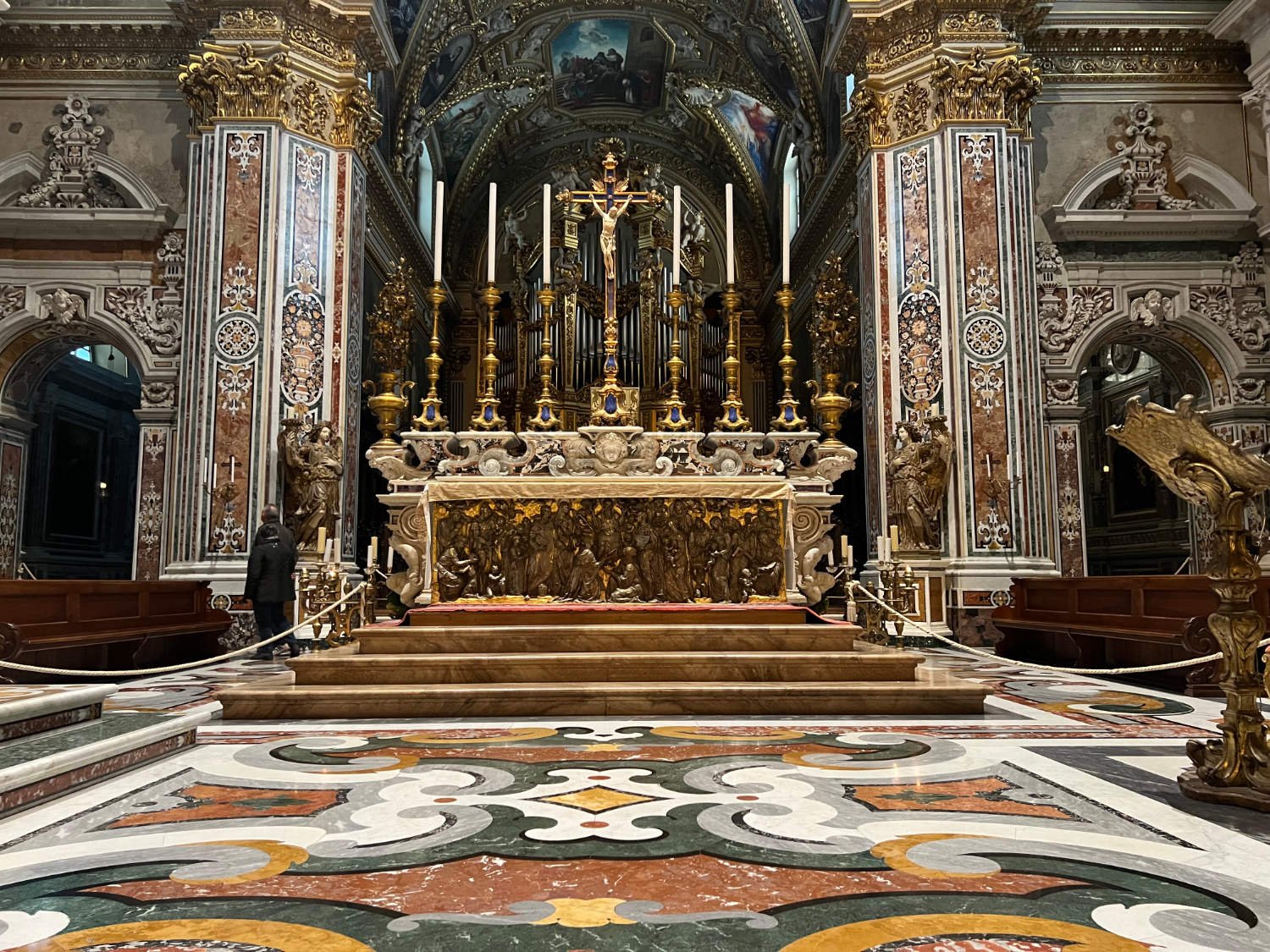
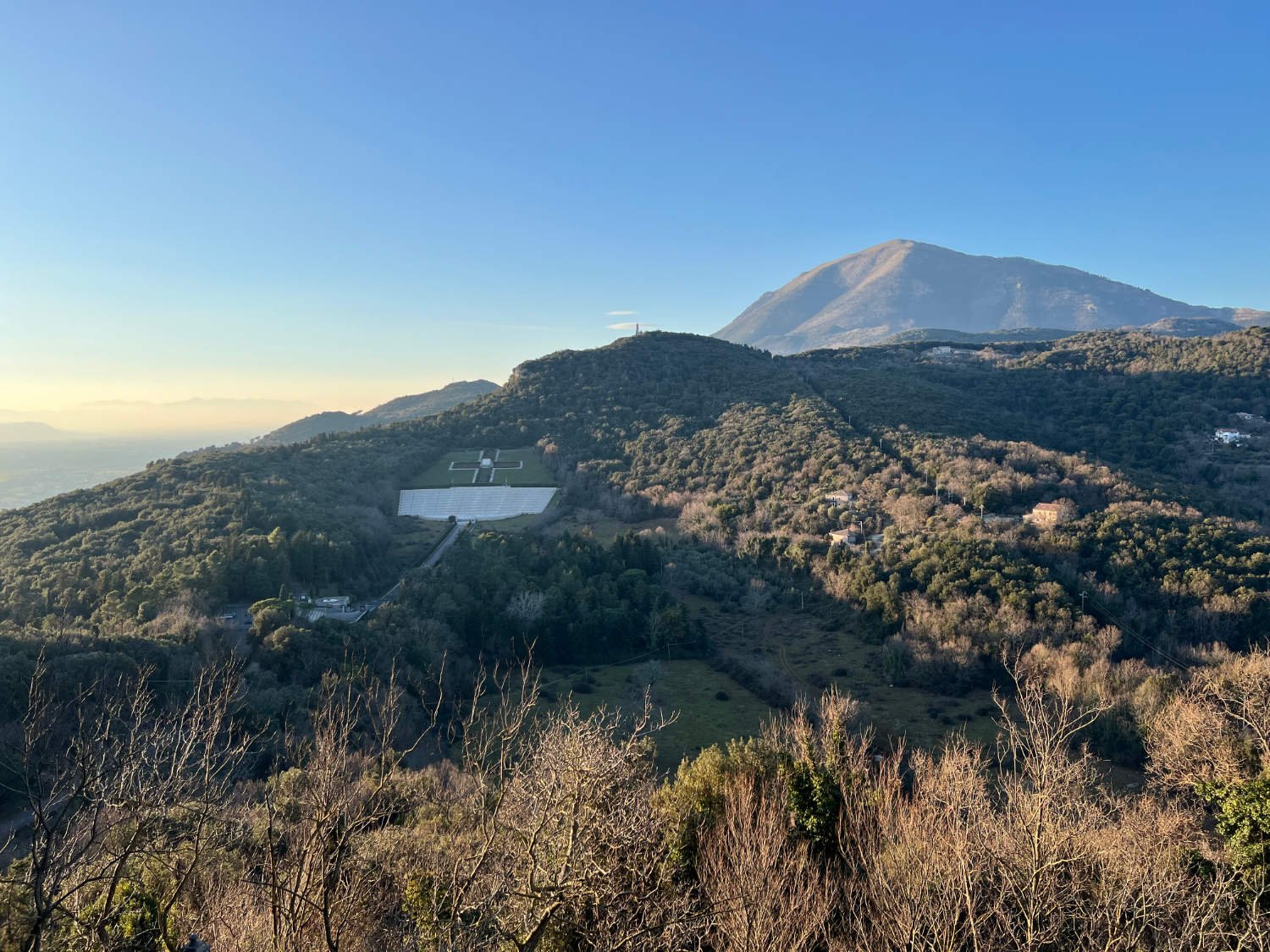
Ride Practicalities
START/FINISH: Gaeta/Monte Cassino DISTANCE: 86km TOTAL ASCENT: 1400m TERRAIN AND SURFACES: quiet roads RECOMMENDED CAFÈS/PUBS: Formia; Contrasti, Gaeta,(There are plenty of choices to suit your mood and budget ACCOMODATION: Gaeta; Dimora del Leone, Cassino; Agriturismo Il Poppieto NEARBY MAINLINE TRAIN SERVICES: Gaeta-Formia (bike reservation is required and costs €3.50, Cassino PLACES TO VISIT; Gaeta; Castello Angionio-Aragonese, Miturno; War Cemetery, Cassino; Abbazia di Monte Cassino LINKS TO OTHER RIDES:
If you’ve flown into Rome; you need to get yourself to Termini Railway Station and buy a ticket for you and your bike. (There are plenty of spaces on the train for bikes). The journey takes the best part of 1.30hrs. You alight at Gaeta-Formia and then have to ride the 13km to Gaeta itself. Should it be lunchtime when you arrive at Gaeta-Formia, lunch at Contrasti in the port of Formia is definitely a good way to begin the journey, as is staying the night in Gaeta, taking any spare time to wander around it castle, port and maze of streets. To get to Gaeta from Formia, follow this route.
Ride notes
If Gaeta was in any other country other than Italy, it would be on the ‘must visit’ list. Its setting is spectacular, for the town sits on a cliff promontory which forms one of the horns of Gaeta Bay. Formidable grey-green mountains rise imperiously out of the azure sea. It’s a working, rather than a slave to tourism. Fishermen land their daily catch. The port serves as both an Italian Naval Base as well as the home for the USS Mount Whitney, which is said to be the world’s most sophisticated Command and Control vessel. But as you ride into town, it is probably not the port, but the Castello Angionio-Aragonese, which catches your eye first. Built in 1223 it was, until 1990, a notorious prison where Nazi war criminals were incarcerated. It continues to brood high above the old town. The town is a labyrinth of narrow streets and alleys.
Recycled Roman ruins
You’ll notice as you weave your way through the narrowest of streets, that many of the walls of houses are built with scavenged bits and pieces from Roman times. Gaeta was an exclusive resort for the Roman ruling class.
The Port at Gaeta
The journey begins under the walls of the Aragonese castle. It will end also under the walls of another Aragonese castle and in-between the two is one of the great mountain ranges of Europe.
On one hand the first section of today’s ride is lovely; the morning light plays on the mountains and the sea, the houses of Formia a painterly delight, and the narrow lanes cutting through fields of olive and citrus trees all make for a beauteous beginning. However, it’s not just the traffic in Formia (there’s no way to avoid it - fortunately the stretch is short and the cars often log-jammed), but the verges of the country lanes out of town. They are lined with rubbish. Once you’re in the vicinity of Mitturno (22km), the waysides are filled with flowers. Earthen tracks alternate with rough tarmac.
Towards the mountains
Mitturno, the first of many hilltop towns. Nearby are extensive Roman ruins and the first of the Commonwealth War Graves. As you head into the mountains, the road inevitably kicks up - sometimes steeply, which means plenty of slow-motion time to admire the fields of flowers or the light shining on the now distant sea. Some of the lanes have the strangest of names; ‘Christ’s way’, ‘The street of the Lesser Christmas’, ‘street of the major Christmas’.
River Garigliano
After some ups and downs, the ride settles beside the river Garigliano. It is a bloody river. In 1503 the occupying French and the would be usurpers Spain, fought a battle near to the Commonwealth Cemetery stands today, which the Spanish won. Their victory gave them the right to take over the Kingdom of Naples, which they ruled for the next two hundred years. Another battle was fought on more or less the same site in 1860, this time between the invading Piedmontese who sought to unify Italy, against the defending force of the Kingdom of Two Sicilies who were defending the status quo. The Unifiers won that one. In 1943, another even bloodier and protracted affair, saw the occupying German army defend the river against the 5th and 8th Armies of the Allies. Once again, it was the invaders - the Allied armies - who won. Perhaps there is a lesson here for future defenders; invaders seem to win the battles of Garigliano.
The ride alongside the river is glorious. The narrow road is quiet (in winter), the air smells of sulphure due to the numerous hot springs in the valley which feed not just the river but the many hotel-spas along the way. You ride through a vivid painting; the river is emerald-green, the poplars are aspirin white. Onto the canvas, the artist has added clusters of amber willows, the ruby coloured stems of cornus, all under an amethyst sky.
At Sant’Appolinare, after some leg-stretching climbs, you cross the river Liri. Here, near to the bridge more terrible battles took place in 1943. Gary Lineker’s film on the battle is worth watching, for in telling the story of his grandfather you begin to understand the full horror of the front..
The Commonwealth War Cemetery, Cassino
The day’s short and numerous climbs may have tired you, but the climb up to the Abbey of Monte Ccassino is worth all the effort. It’s 8km long at an average of 4%, so nothing too terrible. For a place of peace and prayer, the abbey has had its share of grief. The Langobards sacked it in 581, the Saracens in 884, and Napoleon a millennium later. Each time the abbey was re-built more beautiful than before. Its most recent destruction was between November 1943 to May 1944. The road twists around the mountain through scrub, past Rocca Janula Castle to the monastery door. Every centimetre of the climb was bitterly fought over in the last war, often in hand to hand fighting, with huge losses on both sides. Entry to the abbey, the epicentre of European Monasticism, is free, the art work and views spectacular, the restoration unbelievable.
The crypt of Cassino Abbey and St. Benedict's tomb
Buried in the crypt is the founder of Western Christian monasticism, St Benedict of Nursia, along with his sister, Santa Scholastica. Whatever beliefs you may hold, to stand in the heart of European Monasticism hearing the monks chanting their offices through the thick stone walls is a very moving experience.
If you’ve time and energy, you may consider following the route to up a track to the Polish Cemetery which covers part of the hillside.
The spin down towards the decidedy unattractive, but lively town of Cassino is fast and fun. There’s plenty of accomadation to choose from. Just out of town, and on tomorrow’s route is the super Agriturismo Il Pioppeto. Rest up, for tomorrow is enjoyably testing.
Every route on this website has been carefully researched as well as ridden. However situations on the ground can change quickly. If you know of changes to this route, or cafes, pubs and the like which you think other cyclists need to know about, feel free to share your thoughts below.
If you enjoyed this guide, why not subscribe to the website so as not to miss other inspirational routes?
wheremywheelsgo.uk is a Feedspot UK Cycling top website
